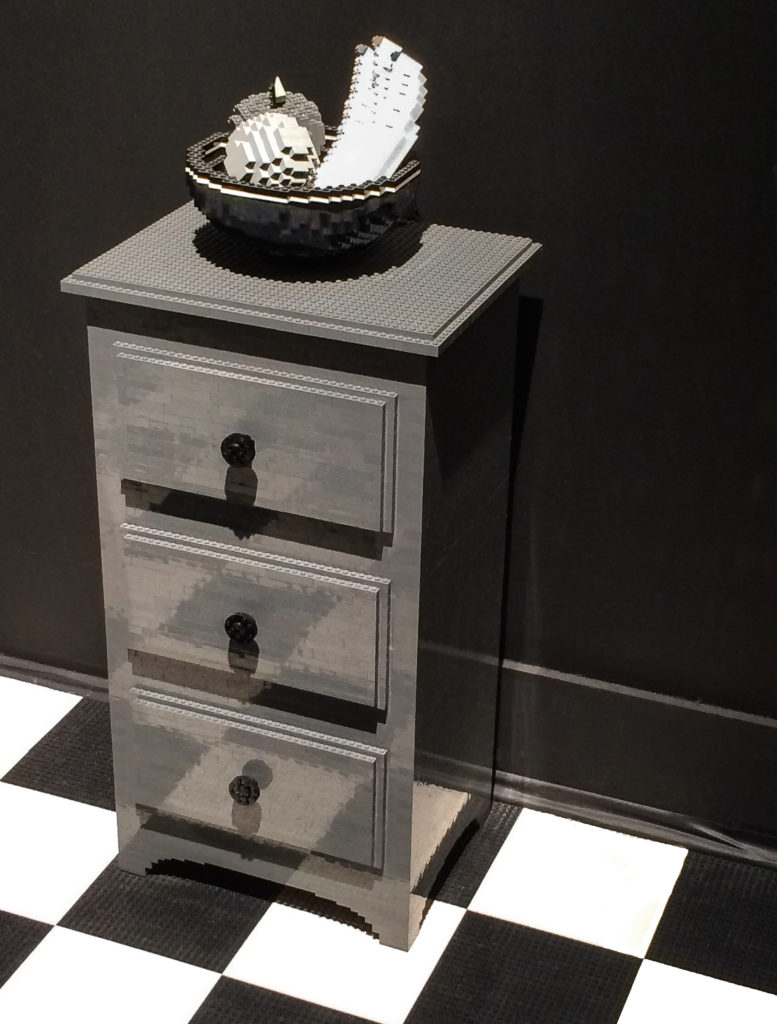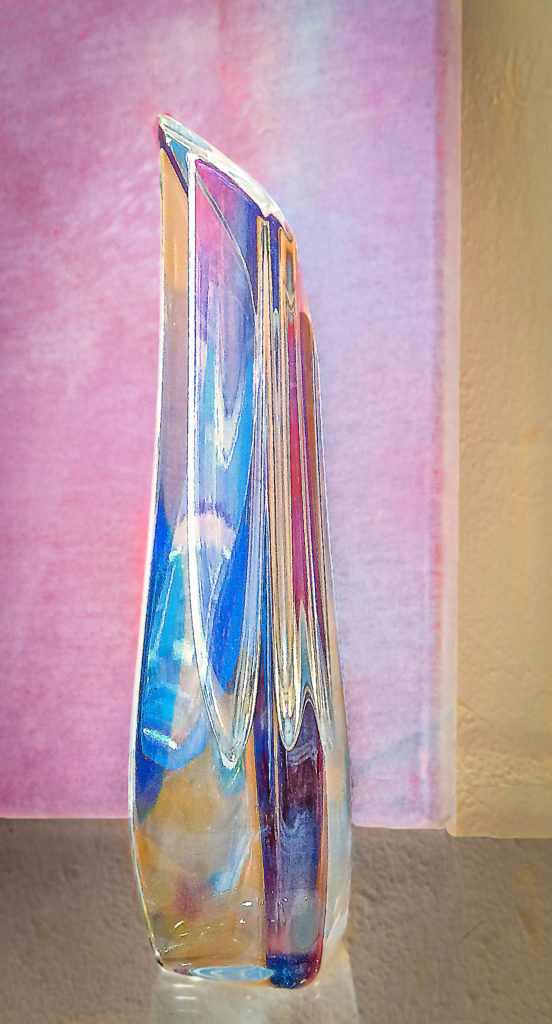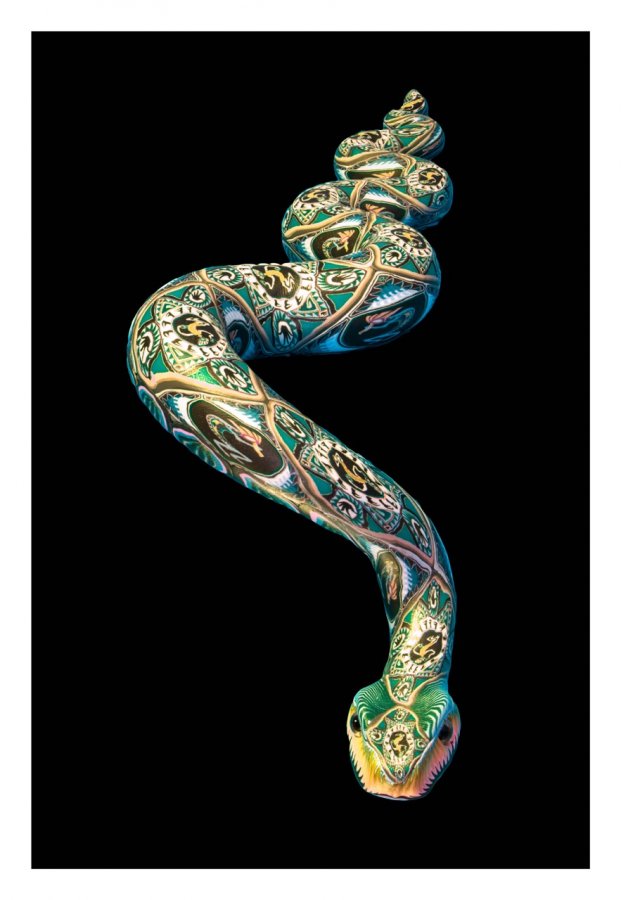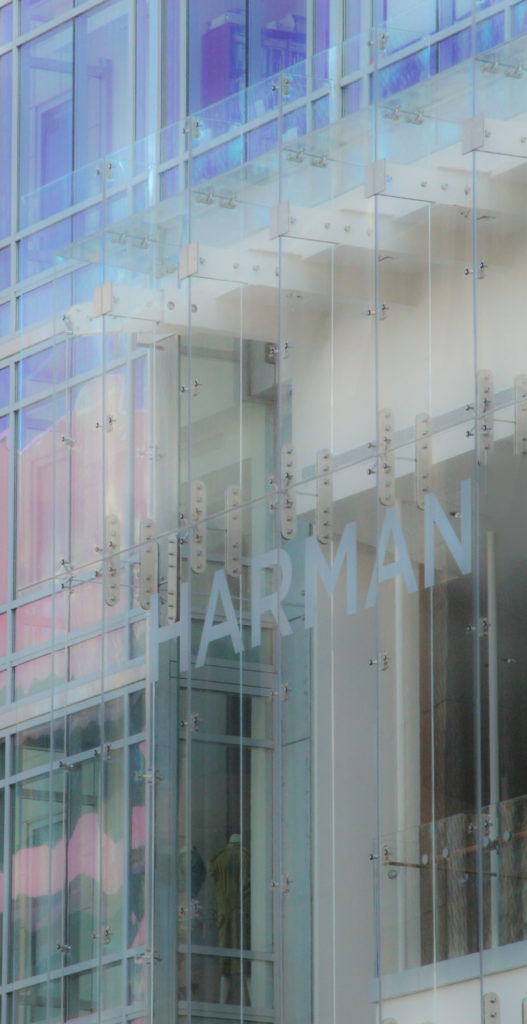Have you ever created a photograph of someone else’s artwork? Can such a photograph achieve more than documentary value? Can I take credit for a photograph of someone else’s work as my own art? In other words, to what degree does a photograph of an artwork need to transform or interpret that artwork to be considered a new work of art?
Let me give a few examples. This first example prompted my question. In 2015, I went to a Lego exhibit, Nathan Sayer’s The Art of the Brick at the Franklin Institute in Philadelphia. I was inspired to take a photograph of a three-drawer end table, with a bowl of fruit on top. I was not particularly interested in the Lego texture of the sculpture, but in the tones of black, grey, and white of the end table, against the black wall, and the black and white checkered floor. Obviously, Sawyer receives credit for creating the table and fruit basket that appears in my photograph. Since the wall and floor constituted the background for all the Lego structures in the room, including those in color, I assume the walls and floor were not part of the original sculpture. For purposes of my inquiry, therefore, let us say that the museum curator helped to design the floor, wall, and lighting. That makes two creators. Other attributes of the photograph, such as the angle of view and camera settings, were mine. I did little editing of this photograph in Lightroom, beyond sharpening the photograph and boosting contrast.
Can I consider my photograph of the table and fruit bowl, below, my artwork?

Woodward, After the Dutch: Photograph of Nathan Sawyer’s Life-Size Lego Table, Franklin Institute (2015)
Let me give a second example. I saw a vase for sale that I found visually beautiful (Rose Vase, Baccarat). I was particularly drawn to the way the light reflected across the glass facades of the vase. I asked the store owner if the artist had chosen the lighting, and he replied that no, he, the store owner designs the lighting to show off works to their best effect. Both artist and someone else created the work before I even happened on it. After taking the photograph—and capturing the light of the moment—I modified the colors and textures of the vase and the walls in Lightroom. I changed the appearance of the vase more than I did the Lego end table, but I am clearly photographing a vase I did not create.
Can I call this image, my artwork?
Two other questions round out my inquiry. The first applies specifically to our club competitions. To what extent does a photograph of another’s artwork merit being considered for a ribbon? Club member David Blass submitted the photograph below to three contests: two judges said the photograph did not merit a ribbon because it was a photograph of someone else’s art work; the third time, David won second place (advanced print). Among David’s choices as photographer, he selected the black background, designed the lighting, altered the colors, determined the placement of the snake on the black surface, and intentionally made the snake appear larger than it actually was.
Interestingly, photographs of buildings—of architecture—do not seem to raise this question of degree of transformation. Yet, architecture is indeed an art form—in fact, it requires the two dimensional surfaces of painting, the three dimensionality of sculpture, plus the artistic complexity of the relationship of building to environment (Pevsner, pp. 15-16). I have submitted photographs of many buildings to competitions (as for example, the one of the Sidney Harmon Center below, which won third place, novice print), and none of the judges have questioned my taking a photograph of someone else’s art. Granted a finished building demands input from a team of creators, from architects to construction workers to engineers. And granted, buildings tend to be big and thus necessitate a kind of selection from the photographer that the three previous photographs, each showing a view of an entire work, do not. But are these factors determinative?
Where does one draw a line for when a photograph of an original art object becomes a new artwork? What criteria should be used in evaluating such a photograph? One might ask why this matters. Perhaps this is personal, but I want to see myself as an artist, as a creator of something beautiful, even when I photograph another’s artwork.
Please come see me at meetings and give me your ideas.
Reference/Notes
Pevsner, Nikolaus. (1963). An outline of European architecture (7th ed.). Baltimore: Penguin Books.
Note: Sawyer included a sign in the exhibit encouraging visitors to take photographs of his work. The store owner gave me permission to take a photograph of the vase. David is the owner of the snake. No one gave me permission to photograph the Sidney Harmon Center.



